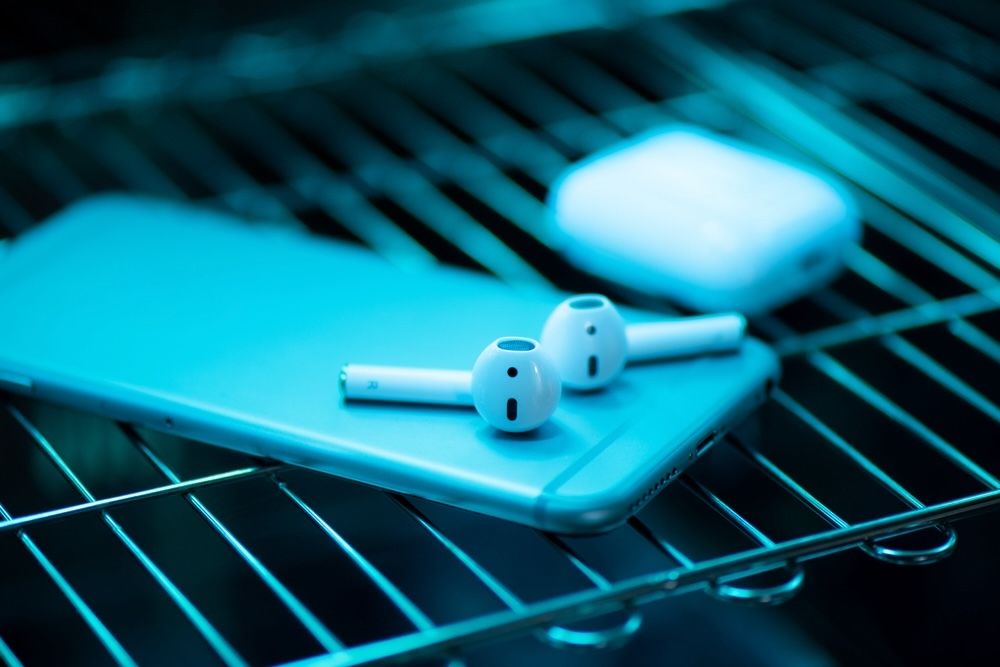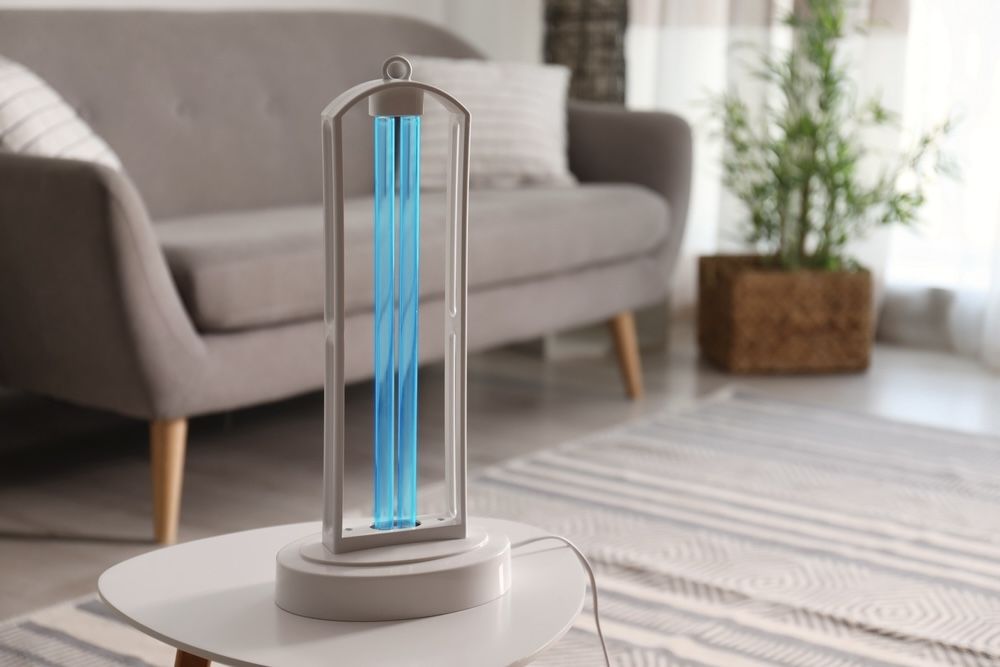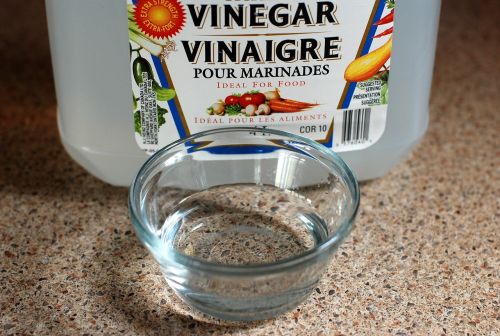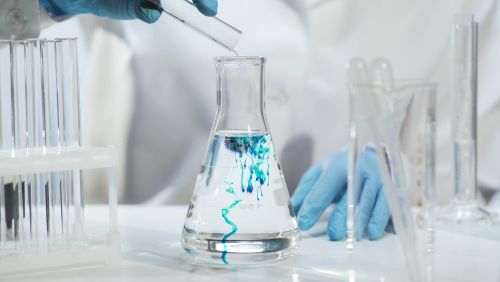The Evolution of UV-C Technology in the Cleaning Industry

In the dynamic world of the cleaning industry, staying ahead of the curve involves not only adopting new practices but also understanding the science behind emerging technologies. One such technology making significant strides in recent years is UV-C light disinfection. As concerns about public health and hygiene continue to escalate, the application of UV-C technology has proven to be a transformative tool in achieving higher standards of cleanliness and safety.
Understanding UV-C Technology
UV-C light, a type of ultraviolet light with wavelengths between 200 to 280 nanometers, has long been known for its germicidal properties. It works by damaging the DNA and RNA of microorganisms, effectively inactivating bacteria, viruses, and other pathogens, preventing them from reproducing and causing infection. This non-chemical approach to disinfection has garnered attention for its efficacy and speed, making it an ideal solution for various cleaning needs.
The mechanism by which UV-C light achieves its germicidal effects is rooted in its ability to penetrate the outer structure of microorganisms and disrupt their nucleic acids. When UV-C photons are absorbed by the DNA or RNA of a pathogen, they cause a photochemical reaction that forms covalent bonds between adjacent nucleotides, specifically thymine or cytosine bases. This reaction results in the formation of dimers, which prevent the genetic material from being correctly read or replicated during cell division. Consequently, the microorganism is rendered non-viable and incapable of causing infection.
In addition to its direct germicidal effects, UV-C light also induces secondary reactions that further enhance its disinfection capabilities. For example, UV-C irradiation can produce reactive oxygen species (ROS) such as hydroxyl radicals and singlet oxygen. These ROS are highly reactive and can cause oxidative damage to various cellular components, including lipids, proteins, and nucleic acids. This multi-faceted attack on microbial cells makes UV-C light an exceptionally effective disinfection method.

Historical Context and Development
The use of UV-C light for disinfection isn't new; its origins date back to the early 20th century. However, its adoption was limited to specific industries such as healthcare and wastewater treatment due to the high cost and limited technological capabilities. Recent advancements have led to more affordable and versatile UV-C devices, broadening its application across multiple sectors, including hospitality, transportation, and residential cleaning.
The initial discovery of UV-C light's germicidal properties can be traced back to the early 1900s, when researchers first observed its ability to kill bacteria. This discovery led to the development of the first UV-C lamps, which were primarily used for water disinfection in municipal water treatment facilities. The high energy and short wavelength of UV-C light made it an ideal candidate for destroying waterborne pathogens, providing a chemical-free alternative to traditional chlorination methods.
As technology progressed, the applications of UV-C light expanded beyond water treatment. In the mid-20th century, hospitals began to adopt UV-C disinfection for air and surface sterilization in operating rooms and patient wards. The ability of UV-C light to rapidly inactivate airborne pathogens made it an invaluable tool in reducing the spread of infectious diseases within healthcare settings. However, the high cost of UV-C equipment and the technical challenges associated with its use limited its widespread adoption.
In recent years, significant advancements in UV-C technology have addressed many of these limitations. The development of more efficient and cost-effective UV-C LEDs has made the technology more accessible to a broader range of industries. These LEDs offer several advantages over traditional mercury-based UV-C lamps, including lower energy consumption, longer operational life, and the ability to produce specific wavelengths for targeted disinfection. Additionally, advancements in materials science and optical engineering have led to the creation of portable and user-friendly UV-C devices, further broadening their application potential.
Applications in the Cleaning Industry
Healthcare Facilities
Hospitals and clinics have been at the forefront of UV-C technology adoption. Portable UV-C units are used to disinfect patient rooms, surgical theaters, and medical equipment, significantly reducing the risk of healthcare-associated infections (HAIs). The application of UV-C technology in healthcare settings is driven by the need to maintain stringent hygiene standards and protect vulnerable patient populations from potentially life-threatening infections.
The use of UV-C light in healthcare facilities encompasses a wide range of applications. In patient rooms, portable UV-C units are deployed after routine cleaning to ensure that all surfaces, including high-touch areas such as bed rails, light switches, and door handles, are thoroughly disinfected. These units can be programmed to emit UV-C light for a specified duration, ensuring that all pathogens present on exposed surfaces are effectively inactivated. In surgical theaters, UV-C disinfection is used to sterilize the air and surfaces before and after procedures, reducing the risk of surgical site infections.
Moreover, UV-C technology is employed to disinfect medical equipment that is difficult to clean using traditional methods. Endoscopes, for example, are often subjected to UV-C disinfection to ensure that all microbial contaminants are eliminated, thereby preventing cross-contamination between patients. The integration of UV-C light into automated endoscope reprocessors has further streamlined this process, enhancing both efficiency and safety.

Hospitality and Tourism
Hotels, cruise ships, and airlines are incorporating UV-C technology to assure guests of their commitment to hygiene. UV-C robots and handheld devices are used to sanitize rooms, common areas, and even luggage, enhancing overall cleanliness and guest satisfaction. The hospitality and tourism industry, which has been severely impacted by the COVID-19 pandemic, is increasingly adopting UV-C disinfection as part of their enhanced cleaning protocols to rebuild consumer confidence and ensure a safe environment for travelers.
In hotels, UV-C robots are utilized to disinfect guest rooms between stays. These robots can navigate autonomously through the room, emitting UV-C light to disinfect surfaces such as beds, desks, and bathroom fixtures. The use of UV-C disinfection not only enhances the effectiveness of traditional cleaning methods but also provides an additional layer of protection against pathogens that may be missed during manual cleaning. Common areas, such as lobbies, gyms, and dining facilities, are also subjected to regular UV-C disinfection to minimize the risk of viral and bacterial transmission.
Cruise ships, which have been identified as high-risk environments for the spread of infectious diseases, are leveraging UV-C technology to maintain hygiene standards. UV-C disinfection systems are installed in air handling units to purify the air circulating throughout the ship. Additionally, portable UV-C devices are used to sanitize public spaces and high-touch surfaces, ensuring that guests and crew members are protected from potential outbreaks.
Airlines are incorporating UV-C technology into their cleaning protocols to enhance passenger safety. UV-C wands are used to disinfect seats, tray tables, and overhead bins between flights. Some airlines have also introduced UV-C air purification systems within the cabin to continuously disinfect the air during flights, providing passengers with peace of mind regarding airborne pathogens.

Public Transportation
The integration of UV-C light in public transportation systems, such as buses, trains, and airplanes, ensures that high-touch surfaces are regularly disinfected, curbing the spread of contagious diseases among commuters. Public transportation systems, which serve as critical infrastructure for urban mobility, are particularly susceptible to the transmission of infectious diseases due to the high volume of passengers and frequent turnover.
To address these challenges, transportation authorities are deploying UV-C disinfection systems across various modes of public transit. Buses and trains are equipped with UV-C fixtures that emit germicidal light to disinfect seats, handrails, and other high-touch areas. These fixtures are often integrated into the vehicle's lighting system, allowing for continuous disinfection during operation. In addition to surface disinfection, UV-C air purification systems are installed in the ventilation systems of buses and trains to remove airborne pathogens, providing a safer environment for passengers.
Airports and transit hubs are also adopting UV-C technology to enhance sanitation protocols. UV-C robots are deployed to disinfect terminals, restrooms, and security checkpoints, ensuring that all high-traffic areas are regularly sanitized. The use of UV-C disinfection in public transportation not only reduces the risk of disease transmission but also restores public confidence in the safety of these essential services.
Residential Cleaning
UV-C technology is becoming more accessible to homeowners, with products like UV-C wands and air purifiers gaining popularity. These devices offer a chemical-free method to sanitize everyday items and indoor air, promoting healthier living environments. The increasing awareness of indoor air quality and the desire for more effective cleaning solutions have driven the adoption of UV-C technology in residential settings.
UV-C wands are handheld devices that emit germicidal light, allowing users to disinfect a variety of household items, including kitchen utensils, remote controls, and electronic devices. These wands provide a convenient and efficient way to eliminate pathogens on surfaces that are frequently touched and difficult to clean using traditional methods. UV-C air purifiers, on the other hand, are designed to improve indoor air quality by removing airborne contaminants such as viruses, bacteria, and mold spores. These purifiers are equipped with UV-C lamps that disinfect the air as it passes through the device, ensuring that the indoor environment remains free from harmful pathogens.
In addition to wands and air purifiers, UV-C technology is also being integrated into household appliances. For example, some vacuum cleaners now feature UV-C lamps that disinfect surfaces as they clean, providing an added layer of protection against pathogens. The availability of UV-C technology for residential use empowers homeowners to take control of their cleaning routines and create healthier living spaces for their families.

Benefits of UV-C Technology
Efficiency
UV-C disinfection is rapid, often taking only a few minutes to inactivate pathogens, making it suitable for high-traffic areas. The speed of UV-C disinfection is a significant advantage in environments where time is of the essence and where surfaces need to be sanitized quickly and frequently. This efficiency allows for continuous operation and minimal disruption to normal activities, making UV-C technology an ideal solution for busy public spaces, healthcare facilities, and transportation systems.
The rapid action of UV-C light is particularly beneficial in settings where turnaround times are critical. For instance, in hospitals, patient rooms need to be disinfected quickly between admissions to accommodate new patients. UV-C disinfection can be completed in a matter of minutes, ensuring that rooms are ready for occupancy without compromising on hygiene standards. Similarly, in the hospitality industry, UV-C robots can disinfect guest rooms rapidly, allowing for a higher turnover rate and improved operational efficiency.
Chemical-Free
Unlike traditional disinfectants, UV-C light does not leave any residues or harmful by-products, making it safe for both humans and the environment. The chemical-free nature of UV-C disinfection is a significant advantage, particularly in sensitive environments where the use of harsh chemicals may pose health risks or cause damage to surfaces and materials.
Traditional chemical disinfectants, such as bleach and quaternary ammonium compounds, can leave behind residues that may be harmful to humans, particularly those with respiratory conditions or chemical sensitivities. These residues can also contribute to the development of antimicrobial resistance, posing a long-term risk to public health. In contrast, UV-C light inactivates pathogens without leaving any chemical traces, ensuring a safer and more sustainable disinfection process.
The environmental benefits of UV-C technology are also noteworthy. The use of UV-C light reduces the reliance on chemical disinfectants, which can have harmful effects on ecosystems when improperly disposed of. By minimizing the use of chemicals, UV-C technology contributes to a cleaner and healthier environment, aligning with sustainability goals and green cleaning practices.
Versatility
From large-scale industrial applications to portable consumer devices, UV-C technology can be tailored to various disinfection needs. The versatility of UV-C technology is one of its most appealing features, allowing it to be adapted for use in a wide range of settings and applications.
In industrial and commercial environments, UV-C disinfection systems can be customized to meet specific requirements. For example, in food processing plants, UV-C conveyors are used to disinfect packaging materials and equipment, ensuring that products remain free from contamination. In the pharmaceutical industry, UV-C cabinets are employed to sterilize laboratory instruments and containers, maintaining the integrity of sensitive materials.
For consumers, the availability of portable UV-C devices provides convenient and effective solutions for everyday disinfection needs. UV-C wands, air purifiers, and even UV-C toothbrush sanitizers are readily available, offering practical ways to enhance hygiene at home and on the go. The wide range of UV-C products on the market ensures that there is a solution for every need, making it easier for individuals and businesses to implement UV-C disinfection into their routines.
Cost-Effective
While initial investments can be high, the long-term savings on chemical disinfectants and reduced labor costs make UV-C technology a cost-effective solution. The cost-effectiveness of UV-C technology is an important consideration for organizations looking to balance quality and budget constraints.
The initial cost of UV-C equipment can be offset by the savings generated through reduced expenditure on chemical disinfectants and cleaning supplies. Over time, the investment in UV-C technology pays off as the need for ongoing purchases of traditional disinfectants diminishes. Additionally, the efficiency and speed of UV-C disinfection reduce labor costs associated with manual cleaning, allowing staff to focus on other critical tasks.
Furthermore, the durability and longevity of UV-C devices contribute to their cost-effectiveness. UV-C LEDs, for example, have a longer operational life compared to traditional UV-C lamps, reducing the frequency of replacements and maintenance. The combination of reduced operating costs and long-term durability makes UV-C technology a financially viable option for organizations across various industries.
Challenges and Considerations
Safety Concerns
Despite its advantages, there are challenges and considerations when implementing UV-C technology. Prolonged exposure to UV-C light can be harmful to skin and eyes. Therefore, strict safety protocols and training are essential for users. The potential health risks associated with UV-C exposure underscore the importance of proper training and safety measures to ensure the safe and effective use of the technology.
To mitigate safety risks, UV-C devices are often equipped with safety features such as motion sensors and automatic shut-off mechanisms. These features help prevent accidental exposure by deactivating the UV-C light when motion is detected within the disinfection area. Additionally, personal protective equipment (PPE) such as gloves, goggles, and face shields should be worn by individuals operating UV-C devices to protect against potential exposure.
Training programs are essential to educate users on the proper handling and operation of UV-C equipment. These programs should cover topics such as the correct positioning of UV-C devices, exposure times, and safety protocols. By ensuring that users are well-informed and equipped to handle UV-C technology safely, organizations can minimize the risk of accidental exposure and maximize the benefits of UV-C disinfection.
Effectiveness on Surfaces
UV-C light can only disinfect surfaces that are directly exposed. Shadows and obstructions can hinder its efficacy, necessitating complementary cleaning methods. The limitation of UV-C light's line-of-sight disinfection highlights the need for comprehensive cleaning protocols that combine UV-C technology with traditional cleaning methods.
In environments with complex surfaces and hard-to-reach areas, it is important to ensure that all surfaces are adequately exposed to UV-C light. This may involve repositioning UV-C devices or using multiple units to achieve complete coverage. Additionally, pre-cleaning surfaces to remove dirt and debris can enhance the effectiveness of UV-C disinfection by allowing the light to penetrate more effectively.
Complementary cleaning methods, such as manual wiping and the use of chemical disinfectants, can be employed to address areas that are not easily accessible to UV-C light. By integrating UV-C technology into a multi-faceted cleaning approach, organizations can achieve a higher standard of hygiene and ensure that all surfaces are thoroughly disinfected.
Regulatory Standards
As the technology evolves, regulatory standards and guidelines must keep pace to ensure consistent and safe application across different settings. The development and implementation of regulatory standards for UV-C technology are critical to ensuring its safe and effective use in various industries.
Regulatory bodies such as the Environmental Protection Agency (EPA) and the Food and Drug Administration (FDA) play a key role in establishing guidelines for the use of UV-C devices. These guidelines cover aspects such as the safety and efficacy of UV-C products, proper labeling and usage instructions, and performance standards. Compliance with regulatory standards ensures that UV-C devices meet minimum safety requirements and perform as intended.
In addition to federal regulations, industry-specific standards and best practices are also important. Professional associations and industry organizations can provide valuable resources and guidance on the implementation of UV-C technology within specific contexts. By adhering to established standards and guidelines, organizations can ensure that they are using UV-C technology safely and effectively, protecting both their staff and the public.
Future Outlook
The future of UV-C technology in the cleaning industry looks promising, with ongoing research and innovation driving its development. Emerging trends include the integration of UV-C systems with IoT and AI, allowing for automated and data-driven disinfection processes. Additionally, advancements in materials and design are expected to enhance the efficiency and safety of UV-C devices.
The integration of UV-C technology with the Internet of Things (IoT) and artificial intelligence (AI) represents a significant advancement in the field of disinfection. IoT-enabled UV-C devices can be connected to a central management system, allowing for remote monitoring and control. This connectivity enables real-time tracking of disinfection activities, ensuring that all areas are consistently sanitized and providing valuable data for quality assurance.
AI algorithms can be used to optimize the operation of UV-C devices, enhancing their efficiency and effectiveness. For example, AI can analyze data from sensors to determine the optimal positioning and duration of UV-C exposure, maximizing disinfection while minimizing energy consumption. AI can also predict maintenance needs and schedule preventive maintenance, ensuring that UV-C devices remain in optimal working condition.
Advancements in materials science are also expected to enhance the performance and safety of UV-C devices. The development of new materials with improved UV-C transmission properties can increase the efficacy of UV-C disinfection. Additionally, innovations in device design, such as the incorporation of flexible and portable UV-C solutions, will further expand the application potential of the technology.
In conclusion, UV-C technology represents a significant leap forward in the quest for effective and sustainable disinfection solutions. As the cleaning industry continues to evolve, embracing such innovations will be crucial in maintaining high standards of hygiene and public health. By understanding the science behind UV-C technology and implementing it safely and effectively, organizations can achieve a higher level of cleanliness and protect the health and well-being of their communities.
Check more articles on our blog

Vinegar: The Ultimate Green Cleaning Solution

The Role of Surfactants in Cleaning

5 Creative Vinegar House Cleaning And Sanitization Methods
